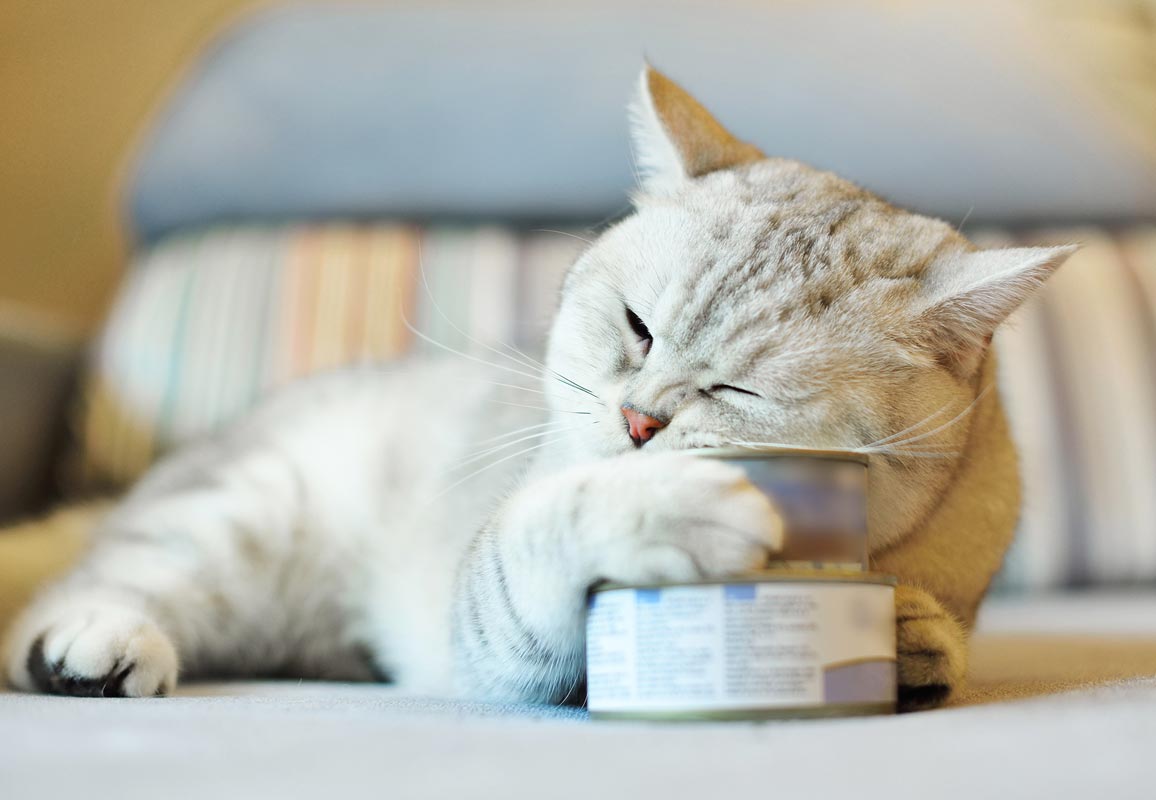Tips for Getting a Picky Cat to Eat Well

Do you have a cat that is picky about food? One of the most common things veterinarians hear about cats' diets at home is that they're finicky. They might eat one food for a few days and then turn a delicate nose up to it and refuse it.
This pickiness can leave a cat-owner feeling concerned and frustrated and may even contribute to intestinal problems like vomiting and diarrhea in a cat that is getting different food types constantly. We've compiled some tips for helping a picky cat eat better.
First, Always Ask Your Veterinarian
If your cat has a sudden decrease in appetite or if she is picky about food out of the blue when she wasn't before, she needs to be checked out for a medical problem before going any further. Many illnesses in cats present first as a decline in appetite.
Additionally, before you change food types, ask your veterinarian for approval on the new diet. You should always keep in mind your cat's life stage (kitten, adult, senior) when choosing food as well as any medical problems she has.
If your veterinarian gives your cat a clean bill of health and believes the finicky-ness is behavioral, you can move on to trying some of the tips below.
Try Wet or Semi-Moist Food
Many cats prefer the texture and taste of wet or semi-moist food over dry. This preference is probably because cats in the wild are predators and live on prey, which has a high moisture content. In fact, cats naturally have a low thirst drive, so eating dry food only can leave them chronically dehydrated and at risk for developing health conditions like kidney disease.
If your cat is currently eating dry food only, try a spoonful of wet or semi-moist and see if she likes it. If she does, try mixing some in with her dry food to see if that will interest her in the kibble. You can also use a little warm water or low sodium chicken broth to soak your cat's kibble for a minute or two to soften it up before serving it to your cat.
Check out this article for more ideas on how to get your cat to ingest more water: "Tips for Getting Your Cat to Drink More."
Many Cats Like Warm Food
This is another preference that probably has to do with cats' predatory natures. Try warming up your cat's wet food in the microwave for a few seconds. Then stir it and test it with your finger to make sure it isn't too hot before giving it to your cat.
If you're mixing wet food with dry, warm the moist food before adding it to the kibble. You can also use warm water or low sodium chicken broth as mentioned above to warm and moisten the kibble.
Implement a Regular Feeding Schedule
Sometimes when cats are picky, it's because they are never allowed to get hungry. If you leave food down for your cat at all times, consider meal feeding instead. Aim for two or three small meals a day at regular intervals. It will take your cat a week or two to get used to this new way of eating, but she will adjust, and then she will be more likely to be hungry and eat her food well at meal times. Ask your veterinarian how many calories per day your cat should eat, find out how many calories are in the diet you're feeding her, and divide her daily allotment into two or three feedings.
Learn more about meal feeding cats, why it's a good idea, how to transition to it from free feeding, and how to do it in a multiple cat household here: "Should Cats Be Fed Meals or Free Choice?"
Try not to switch foods frequently or quickly. Doing so can cause GI problems in cats, including vomiting and diarrhea, which may further negatively impact appetite. Try to switch foods slowly by mixing the new one with the old one for a few days when possible.
Praise Your Cat for Eating
Give your cat some positive reinforcement for eating her meals. Praise her and pet her a little when she settles in to chow down. When you do this, you provide additional positive associations in your cat's mind with eating, and that can really help encourage her to do it.
Control Multiple Cat Feeding Situations
Sometimes cats seem picky about food when they're really afraid to eat. This happens in multiple cat households when one cat gives another cat a hassle at the food bowl, chasing her off.
If you have multiple cats and you think this might be going on, create separate feeding areas, feed meals, and keep the harassed cat separate so she can eat in peace. This will seem like a lot of work in the beginning, but the cats will quickly get used to the situation and go where they're supposed to be when it's food time. Learn more here: "Tips for Feeding Cats in Multiple Cat Households."
You May Also Like These Articles:
Should Cats Be Fed Meals or Free Choice?
Can Cats Be Vegetarians or Vegans?
Ethoxyquin, Mercury, and PCBs: Is Feeding Fish Safe for Cats?
Dehydration in Cats: How Can You Tell If a Cat Is Dehydrated?
Tips for Feeding Cats in Multiple Cat Households
Notice: Ask-a-Vet is an affiliated service for those who wish to speak with a veterinary professional about their pet's specific condition. Initially, a bot will ask questions to determine the general nature of your concern. Then, you will be transferred to a human. There is a charge for the service if you choose to connect to a veterinarian. Ask-a-Vet is not manned by the staff or owners of CatHealth.com, and the advice given should not delay or replace a visit to your veterinarian.





